1 Stephan R. Epstein: Freedom and growth. The rise of states and markets in Europe, 1300-1750 , London / New York, Routledge, 2000. Cf. the decline in interest rates Stephen Broadberry, Sayantan Ghosal & Eugenio Proto: «Commercialisation, Factor Prices and Technological Progress in the Transition to Modern Economic Growth», Warwick economic research papers , 852 (2008); Gregory Clark: The Interest Rate in the Very Long Run: Institutions, Preferences and Modern Growth (working paper 2005); Ian Blanchard: «International Capital Markets and their Users, 1450-1750», in Maarten R. Prak (ed.): Early Modern Capitalism. Economic and Social Change in Europe, 1400-1800 , London, Routledge, 2001, pp. 107-124; Sidney Homer & Richard Sylla: A history of interest rates , Hoboken, John Wiley & Sons, Inc., 2005 (4 thedition).
2 Jan Luiten van Zanden: The long road to the Industrial Revolution. The European economy in a global perspective, 1000-1800 , Leiden / Boston, Brill, 2009; I. Blanchard: «International Capital Markets»; Donald N. McCloskey & John Nash: «Corn at interest: the extent and cost of grain storage medieval England», American Economic Review, 74 (1984), pp. 174-187; Michael M. Postan: The medieval economy and society , London, Weidenfeld and Nicolson, 1972.
3 John Munro: The Monetary Origins of the « Price Revolution » : South German Silver Mining, Merchant-Banking, and Venetian Commerce, 1470-1540 (Working paper Department of Economics and Institute for Policy Analysis University of Toronto, 1999); Ian Blanchard: «English royal borrowing at Antwerp, 1544-1574», in Marc Boone & Walter Prevenier (eds.): Finances publiques et finances privées au bas moyen âge. Actes du colloque tenu à Gand les 5 et 6 mai 1995 , Louvain / Apeldoorn, Garant, 1996, pp. 57-71; Hans-Peter Baum: «Annuities in late medieval Hanse towns», Business History Review , 59 (1985), pp. 24-48.
4 Douglass C. North & Barry R. Weingast: «Constitutions and commitment: the evolution of institutions governing public choice in seventeenth-century England», The Journal of Economic History , 49 (1989), pp. 803-832; Douglass C. North: Institutions, institutional change and economic performance , Cambridge, Cambridge University Press, 1990, p. 69; Stephan R. Epstein: Freedom and growth , pp. 61-62. Clark, however, has suggested that the decline was due to changes in the «time preference» of people, who came to prefer saving over spending over time (G. Clark: The Interest Rate ).
5 I. Blanchard: «International capital markets». Cf. monetary unions in the German Empire: Oliver Volckart & Lars Boerner: «…darumb als dann die Bequemikeit eyner einigenn Muntz sich manigfaltig erzeigen mocht…. Spätmittelalterliche Währungsunionen und ihre Folgen», Bankhistorisches Archiv. Zeitschrift für Bankegeschichte , 33 (2007), pp. 103-123.
6 David Stasavage: States of credit. Size, power and the development of European polities , Princeton, Princeton University Press, 2011, p. 14.
7 Anthony Molho: «The state and public finance: a hypothesis based on the history of late medieval Florence», Journal of Modern History , 76 suppl. (1995), pp. 97-135; David Herlihy & Christiane Klapisch-Zuber: Les Toscans et leur familles , p. 251; William M. Bowsky: The finance of the commune of Siena 1287-1355 , Oxford, Clarendon Press, 1970, pp. 189-191, 199-200, 223-224.
8 Charles Tilly: «Entanglements of European cities and states», in Charles Tilly & Wim P. Blockmans (eds.): Cities and the rise of states in Europe , A . D . 1000 to 1800 , Boulder, Westview Press, 1994, pp. 1-27, there 24.
9 How access to financial markets allowed polities in the province of Holland to organize themselves, has been described by James Tracy (James D. Tracy: A financial revolution in the Habsburg Netherlands. Renten and renteniers in the County of Holland 1515-1565 , Berkeley / Los Angeles / London, University of California Press, 1985; idem: Holland under Habsburg rule 1506-1566. The formation of a body politic , Berkeley / Los Angeles / London, University of California Press, 1990.
10 Raymond van Uytven: «De macht van het geld: financiers voor Floris V», in Dick Edward Herman de Boer, Erich H. P. Cordfunke & Herbert Sarfatij (eds.): Wi Florens… De Hollandse graaf Floris V in de samenleving van de dertiende eeuw , Utrecht, Matrijs, 1996, pp. 212-223.
11 John H. Munro: «The medieval origins of the financial revolution: usury, rentes, and negotiability», International History Review , 25 (2003), pp. 505-562; James D. Tracy: «On the Dual Origins of Long-Term Urban Debt in Medieval Europe», in Marc Boone, Karel Davids & Paul Janssens (eds.): Urban Public Debts. Urban governments and the market for annuities in Western Europe (14 th -18 th centuries) , Turnhout, Brepols, 2003, pp. 13-24.
12 Here, I will use the term «interest rate» to refer to the rate of return on annuities (purchase price/annuity). Of course, the people that contracted annuities in the late Middle Ages would have had another conception of this rate of return.
13 Cf. surveys: Charles P. Kindleberger: A financial history of Western Europe , 2 ndedition, New York, Oxford Universty Press, 1993, pp. 37-56; Edmund B. Fryde & Matthew M. Fryde: «Public credit, with special reference to North-Western Europe», in Michael M. Postan, Edwin E. Rich & Edward Miller (eds.): The Cambridge Economic History of Europe. Volume III. Economic Organization and Policies in the Middle Ages , Cambridge, Cambridge University Press, 1963, pp. 430-553.
14 J. H. Munro: «The medieval origins».
15 Jaco Zuijderduijn: Medieval Capital Markets: Markets for Renten, State Formation and Private Investment in Holland (1300-1550) , Leiden / Boston, Brill, 2009, pp. 144-145, 252-258.
16 J. H. Munro: «The medieval origins», pp. 521-524.
17 Jules Lameere & Henri Simont (eds.): Receuil des anciennes ordonnances de la Belqique. Deuxième série. 1506-1700. Tome quatrième , Brussels, J. Goemaere, 1907, p. 235. Imperial charter of 4-10 1540 entitled «Eeuwig edict». This maximum of 12 % applied to loans contracted by merchants, and, probably, redeemable annuities. There is no evidence that the decree also applied to life annuities. For the rest of the late Middle Ages, there is little evidence of the imposition of maximum interest rates (J. Zuijderduijn: Medieval capital markets , pp. 243-244).
18 J. Zuijderduijn: Medieval capital markets , pp. 107-108.
19 Johannes Hermann Kernkamp (ed.): Vijftiende-eeuwse rentebrieven van Noordnederlandse steden , Groningen, Wolters, 1961, pp. 60-61; J. Zuijderduijn, Medieval capital markets , pp. 134-135.
20 Cf. other examples of representatives of towns travelling abroad to sell annuities: J. H. Kernkamp: Vijftiende-eeuwse rentebrieven , p. 61; Jacques Cornelis van Loenen: De rente-last van Haarlem , unpublished manuscript available at the Rijksarchief Kennemerland, pp. 6-8, 10-11.
21 J. Zuijderduijn: Medieval capital markets , pp. 112-113. Cf. other examples of towns making use of the service of brokers: ibidem, pp. 114-115; Lambertus M. VerLoren van Themaat et al. (eds.): Oude Dordtse lijfrenten. Stedelijke financiering in de vijftiende eeuw , Amsterdam, Verloren, 1983, pp. 55-56; J. C. Van Loenen: De rentelast van Haarlem , pp. 6-7.
22 J. H. Kernkamp: Vijftiende-eeuwse rentebrieven , pp. 60-61.
23 Ibidem, p. 61.
24 J. Zuijderduijn: Medieval capital markets , pp. 172-173.
Читать дальше
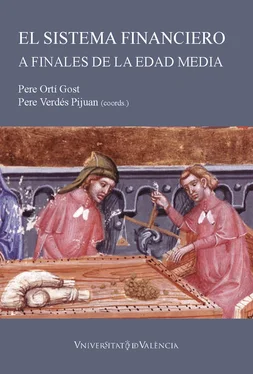

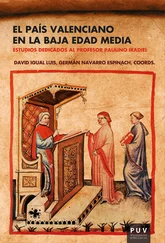
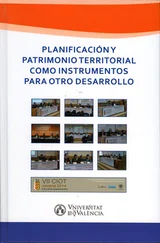
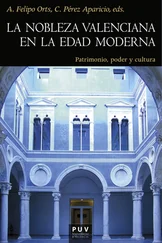

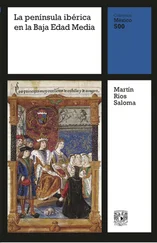



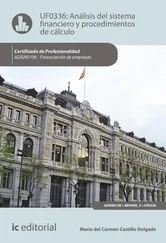
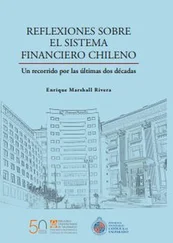
![Rafael Gumucio - La edad media [1988-1998]](/books/597614/rafael-gumucio-la-edad-media-1988-1998-thumb.webp)